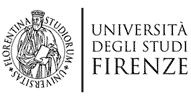Theses available
Theses available
The psychology and bioengineering of “haptic telepresence”
Domains: Psychology, Industrial Engineering, Informatic Engineering, Physics and Medicine
Supervisors: A. Guazzini, F. Carpi, L. Bocchi, F. Bagnoli, and (??)
The group of Prof. Carpi (University of Florence) developed an haptic device able to increase the immersivity into virtual environments. Such improvement of virtual experience opens a variety of scientific scenarios and topics, ranging between the psychology (and psychophysics) of haptic dynamics, to the clinical applications (e.g., neuropsychological rehabilitation, psychological relief, gamification of procedures, neuropsychological and clinical modeling). The collaboration between VirtHuLab (Virtual Human Dynamics Laboratory) and SMART (Soft Matter Transducers and Artificial Muscles) will support and supervise the project.
Engagement, Participatory Citizenship, Collective Intelligence modeling
Domains: Psychology, Physics, Informatic Engineering
Supervisors: A. Guazzini, F. Bagnoli, L. Bocchi
Virtual environments, social media, web-based applications (i.e., app) disruptively altered the functioning of human minds, groups, and community. The modeling of complex social (as well as psychosocial and cognitive) group dynamics (i.e., sociophysics and econophysics) must nowadays consider and understand the role and the impact of such technologies, in order either to predict their impact as well to design and develop brand new theories, tools and interventions devoted to improve engagement, participatory citizenship, and collective intelligence in different fields ad scientific domains.
Sociophysics and Psycho-Epidemiology
Domains: Psychology, Physics, Medicine
Supervisors: A. Guazzini, D. Fanelli, F. Bagnoli, L. Rasero
The COVID19 emergence demonstrated how a complex system facing with a pandemic event is characterized by psychological, psychosocial, social and medical dynamics, and how it should be modeled in order to be understood and forecasted considering all the previous interacting elements. In particular, the evolution of public and private opinions, attitudes and behaviours (e.g., the adherence to the prescriptive social norms generated by the national governments to control the pandemic event) historically studied by sociophysics, can be merged with the epidemic modeling in order to forecast such complex systems by means of the tool of statistical physics and complex system science.
Multi-level modelling of cellular metabolism
Domains: Biology, Physics
Supervisors: M. Fondi, D. Fanelli
Cellular metabolism is a paradigmatic example of a complex biological system. In all biological entities, thousands of reactions continuously transform organic matter into cellular metabolites that are capable of sustaining life in very different environmental conditions. Deciphering the rules and the dynamics of this flow of matter is key to the understanding of many different aspects of life, including disease, biotechnological innovations, basic knowledge and evolution. However, the complexity of this biological object (cellular metabolism) hampers a comprehensive characterization of its actual functioning in living entities and a correct interpretation/prediction on the role of cellular perturbation (e.g. gene loss/gain, changes in external parameters) on the overall cell physiology. In our labs, we use systems biology to generate testable predictions of cellular metabolism in many different context such as plant-bacteria interactions, marine bacteria metabolism, pathogens metabolism. To do this we apply a multi-disciplinary approach and blend together tools liked ODEs-based modelling and Flux Balance Analysis with experimental data.
Modelling of microbial communities dynamics
Domains: Biology, Physics
Supervisors: M. Fondi, D. Fanelli, G. Bacci
It is known that one of the major role in sustaining the ecosystems is played by microorganisms that are responsible for biogeochemical processes creating conditions for living of other organisms and for self-purification of natural and anthropogenically-shaped ecosystems. This huge potential comes to the cost of a certain instability of microbial communities and to a scarce predictability of the faith of a microbial assemblage in natural settings. Indeed, a microbiome is a paradigmatic example of a complex system in which an emergent property (e.g. a biological process such as the successful bioremediation of a polluted site) is the outcome of many (positive and negative) interactions among its members (microbial species). In such systems, the whole is greater than the sum of the parts and what really determines the success of the bioprocess are the metabolic and regulatory interactions among the cells taking part to it. Indeed, deciphering the underlying connections between the environment and the microorganisms inhabiting it is one of the key objectives in present-day biological research, from clinical to environmental areas.
High-throughput sequencing approaches have provided novel methods to partially overcome limits imposed by classical cultivation techniques, enabling the reconstruction of almost complete microbiomes. However, to understand how these communities behave and interact under different conditions, we must go beyond the descriptive nature of these analyses and develop mechanistic methods for hypothesis generation and ad-hoc experimental design. The main goal of this project is to develop a computational framework to:
i) predict and simulate microbial assemblage dynamics from environmental parameters and microbial interactions and
ii) using such predictions to design intervention strategies to optimize specific environmentally-related biological processes carried out by characterize microbial communities or to sustain naturally occurring microbial biodiversity of unique, pristine environments in the face of global climate changes.


